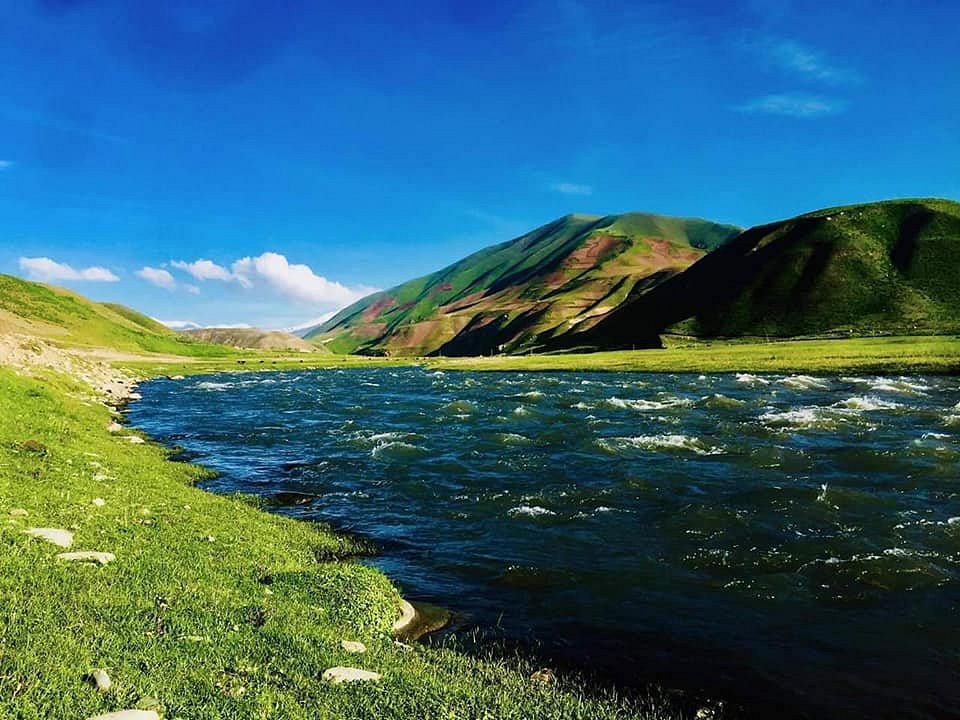Nestled in the northeastern corner of Afghanistan, Badakhshan Province is a region of breathtaking natural beauty and rich cultural heritage. Renowned for its rugged mountains, emerald valleys, and diverse ethnic communities, Badakhshan is often referred to as one of Afghanistan’s hidden gems. As a historically significant area that has served as a crossroads of cultures, it offers a unique blend of history, tradition, and natural wonder.
A Historical Overview
Badakhshan has a long and storied history that dates back to ancient times. It was part of the famed Silk Road, a network of trade routes connecting the East and West, facilitating cultural exchange and commerce. The region has played host to numerous civilizations, including the Achaemenids, Greeks, and Mughals. Its strategic location made it a significant center for trade and cultural interaction.
One of the most fascinating historical aspects of Badakhshan is its association with Alexander the Great, who is said to have passed through the region during his conquests. The ancient city of Bactria (modern-day Bactrian region) once flourished in this area, revered for its wealth and cultural richness.
During the Islamic Golden Age, Badakhshan became a seat of learning and scholarship. The famed Persian poet Rumi is believed to have ancestral roots in this province. The region continues to be recognized for its cultural contributions, particularly in literature and the arts.
Geographical Diversity
The geographical landscape of Badakhshan is as diverse as its cultural tapestry. The province is characterized by its towering mountains, including parts of the Hindu Kush range and the Pamirs. Encompassing an area of approximately 44,000 square kilometers, Badakhshan features rugged terrain, deep valleys, and pristine lakes.
One of the most breathtaking sights in Badakhshan is Koh-i-Baba, a prominent mountain known for its stunning vistas and hiking opportunities. The region is also home to the azure waters of Lake Nuristan, which attracts visitors and nature enthusiasts.
Badakhshan’s diverse climate is influenced by its elevation, with alpine characteristics in the higher altitudes. The valleys benefit from agricultural activities due to the fertile soil, allowing for the cultivation of a variety of crops, including fruits, vegetables, and grains.
Cultural Heritage
The culture of Badakhshan is a vibrant tapestry woven from various ethnic groups, including Tajiks, Uzbeks, Hazaras, and Kirghiz. Each group contributes to the region’s rich cultural heritage, expressed through language, traditions, music, and art.
The people of Badakhshan speak various languages, with Dari and Pashto being the most widely spoken. The region is known for its rich oral traditions, storytelling, and poetry, which reflect the history and values of the local communities. Traditional music, particularly the use of instruments such as the rubab, adds to the cultural vibrancy of the province.
Badakhshan is also famous for its craftsmanship, particularly in weaving and pottery. Handwoven carpets are highly regarded, showcasing intricate designs and vibrant colors. The local bazaars buzz with activity, offering visitors a glimpse into the daily life of the communities.
Economic Activities
The economy of Badakhshan is primarily based on agriculture, animal husbandry, and trade. The fertile valleys support a range of crops, including fruits like apples, pomegranates, and grapes, as well as grains such as wheat and barley. Livestock farming is also prevalent, with residents raising sheep, goats, and yaks.
In addition to agriculture, Badakhshan is rich in mineral resources, including emeralds and lapis lazuli. The province’s mining activities, especially in lapis lazuli, have attracted attention for centuries, as this semi-precious stone has been prized since antiquity for its deep blue color. However, the mining industry has faced challenges, including safety concerns and environmental impacts.
More:Read about on Jalalabad: The Gem of Eastern Afghanistan
Badakhshan’s geographical location makes it a vital connection point for trade with neighboring countries such as Tajikistan and China. Markets in the region facilitate the exchange of goods, linking local products with broader markets.
Contemporary Challenges
Despite its natural beauty and cultural richness, Badakhshan faces numerous contemporary challenges. Security issues, particularly linked to the resurgence of the Taliban, pose significant threats to stability and development. The province has witnessed sporadic violence, impacting the lives of residents and hindering economic activities.
Access to basic services such as education, healthcare, and clean water remains limited in many areas. Armed conflict has affected the provision of social services, and local leaders are striving to improve conditions for their communities.
Moreover, the rugged terrain and remote location of many villages complicate infrastructure development. Roads and transportation networks require urgent attention to ensure accessibility and connectivity within the province and to neighboring regions.
The Resilience of the People
The people of Badakhshan have demonstrated remarkable resilience in the face of adversity. Local communities are working together to address challenges and seek sustainable solutions for development. Grassroots organizations are increasingly involved in community-building efforts, focusing on education, health, and livelihood opportunities.
Education has become a priority in Badakhshan, particularly for girls and young women. Local advocacy groups emphasize the importance of schooling and empowerment, striving to create equal opportunities for all.
The Role of Women
Women in Badakhshan have traditionally faced numerous challenges, but there are encouraging signs of change. Women’s rights organizations are working to promote gender equality, providing education and vocational training to empower women economically and socially.
Women in Badakhshan are increasingly taking on leadership roles within their communities, advocating for their rights and actively participating in local decision-making. Initiatives aimed at skill development and entrepreneurship are helping women build their capacity to contribute to the economy.
Path to Development
The potential for development in Badakhshan is immense. Investment in infrastructure, education, and healthcare is critical to creating a stable and prosperous future for the province. International cooperation and support can help facilitate these efforts, ensuring that the voices of local communities guide the development agenda.
More: Wanted to download Odisha Magazines, visit here
Local governance and community engagement are essential for successful development initiatives. Empowering local leaders and fostering collaborative approaches can help address challenges and promote sustainable solutions tailored to the needs of the people.
Conclusion
Badakhshan Province stands as a hidden gem in Afghanistan, rich in natural beauty, cultural heritage, and resilience. The stunning landscapes, vibrant traditions, and diverse communities make it a unique region, deserving of recognition and support.
As Badakhshan navigates its contemporary challenges, the strength and determination of its people are evident. With concerted efforts in education, economic development, and community empowerment, the province has the potential to thrive in the years to come.
FAQ For Badakhshan Province: Afghanistan’s Hidden Gem
Where is Badakhshan Province located?
You can reach Badakhshan by road or by air. The provincial capital, Faizabad, has a small airport with flights from Kabul. Road travel may involve long journeys through mountainous terrain.
What is the best time to visit Badakhshan?
The best time to visit Badakhshan is during the summer months (June to September) when the weather is milder, and the natural landscape is at its most vibrant.
How can I reach Badakhshan Province?
You can reach Badakhshan by road or by air. The provincial capital, Faizabad, has a small airport with flights from Kabul. Road travel may involve long journeys through mountainous terrain.
What attractions can I visit in Badakhshan Province ?
Badakhshan is known for its breathtaking landscapes, including the Wakhan Valley, the Pamir Mountains, and ancient Silk Road sites. The province is also famous for its lapis lazuli mines and traditional villages
Are there accommodation options in Badakhshan Province ?
Yes, Badakhshan offers limited accommodation options, including guesthouses and hotels in Faizabad and other towns. It’s advisable to book in advance, especially during peak travel seasons.
Is Badakhshan Province safe for tourists?
Safety conditions in Badakhshan can vary. It’s essential to check current travel advisories and consult local sources about the security situation before planning your trip.
What local cuisine should I try in Badakhshan Province ?
Don’t miss traditional Afghan dishes such as kabuli pilaf, dumplings (mantu), and various kebabs. The local cuisine reflects the region’s cultural diversity and fresh ingredients.
Can I interact with the Badakhshan Province local communities?
Absolutely! The people of Badakhshan are known for their hospitality. Engaging with the locals can provide valuable insights into their customs, traditions, and way of life.
What is the cultural significance of Badakhshan ?
Badakhshan has a rich cultural heritage and has been an important crossroads on the Silk Road. The province is home to diverse ethnic groups and traditions, reflecting the blend of various cultures throughout history.


